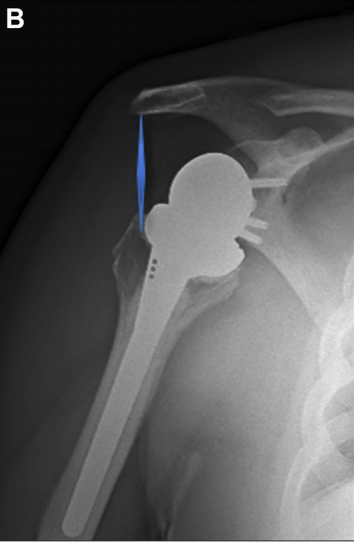Objective: The present study aimed to compare the isometric strength and endurance of shoulder abduction and internal and external rotation between operated shoulders and nonoperated, contralateral shoulders of patients who underwent reverse shoulder replacement due to unilateral rotator cuff tear arthropathy.
Patients and methods: With a diagnosis of cuff tear arthropathy, 41 consecutive patients (mean age of 70.8 years; age range, 57 to 84; 36 females, 5 males) who underwent unilateral reverse shoulder arthroplasty were reviewed based on functional and radiological data. In all cases, cuff tear arthropathy was unilateral and contralateral shoulder was asymptomatic, with normal shoulder function. The average length of follow-up was 34 months (range of 12e67). To assess patients' functional level, the Constant score and the Disabilities of the Arm, Shoulder, and Hand (the Quick-DASH) outcome measure were used preoperatively and at the final examination. The primary outcomes of the present study were measurement of isokinetic strength and endurance of shoulder abduction and internal and external rotation using an isokinetic evaluator.
Results: Patients exhibited marked improvement in functional level as reflected by a significant increase in the mean Constant score from 38 preoperatively to 65 at the final follow-up (p ¼ 0.03). The functional improvement was supported by a decrease in the mean Quick-DASH from 64 preoperatively to 26 at the final follow-up (p ¼ 0.018). In the comparison of the isokinetic strength and endurance of shoulder abduction, no statistical difference was observed between operated shoulders and contralateral shoulders (p > 0.05). However; the strength and endurance of internal and external rotation were lower in operated shoulders than in contralateral shoulders (p < 0.05). Similarly, there was no statistically significant difference in comparisons of the durability of abduction (p > 0.05); however, the durability of internal and external rotation were significantly lower in operated shoulders (p < 0.05).
Conclusion: In terms of durability and strength of abduction, similar results with the unaffected shoulder may be accomplished; nonetheless, the surgeon should be aware that durability and strength of rotation would be weak.
Level of evidence: Level III, Therapeutic Study



.png)
.png)

